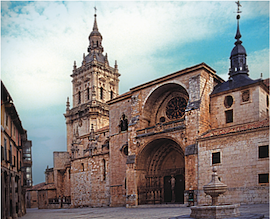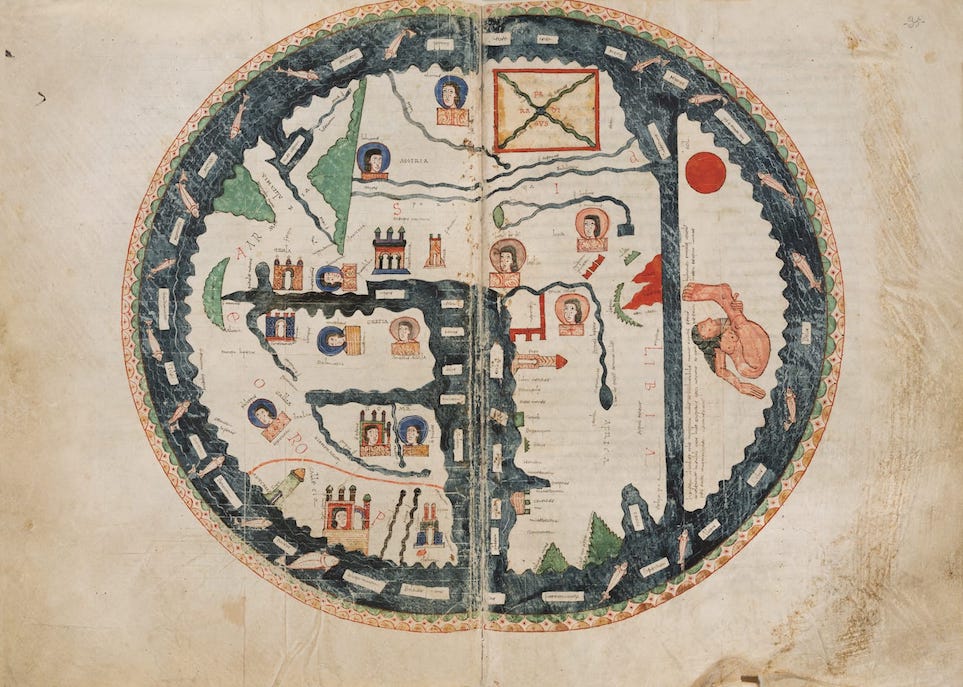
original manuscript is preserved.
First romanesque Beatus from Spain and a master piece of romanesque art.
The codex with the Commentary to the Apocalypse by Beatus of Liébana, today stored at the Diocesan Historical Archive of El Burgo de Osma Cathedral, is nowadays viewed as one of the most important texts by Beatus among those currently known for several reasons: it is the earliest Romanesque Beatus known in Spain and an international masterpiece of Romanesque art. Among the most creative with respect to traditional iconography, the Beatus held at El Burgo de Osma is one of the best preserved of the rst two original editions of the Beatus. For this reason, the recent critical edition of the Commentary by Beatus, published in the prestigious series of the “Corpus Christianorum” by the pro minent specialist in Vetus Latina, Professor Roger Gryson (University of Louvain), is illustrated with miniatures from the Osma Beatus (imitating the layout of a Beatus Codex).
Certain items in the codex reveal its date and also information about its authors: begun in 1086 (probably on January 3rd), it was written by the presbyter Pedro and illuminated by the painter Martino. The palaeographic and codicological characteristics indicate that the codex originated in the monastery of Saint Facundus and Saint Primitivus in Sahagún, a very important centre for the Cluniac reform and one of the preferred resting places of King Ferdinand I and King Alphonse VI.

kings of the earth” (Rev. 17, 14-18). This illustration from
the Osma codex shows a Whore of Babylon for the first
and only time seductively nude.
The abbot during these years was the French Cluniac monk Bernard de Séridac (1080-1086), a highly influential and key figure in ecclesiastic reform and French influence in Spain, so it is no surprise that he was installed at the end of 1086 as the first Archbishop of the newly reconquered Toledo (1086-1124). While Bernard is not mentioned in the Osma Beatus, his dominating presence in Sahagún must without doubt have had an impact on the production of this codex: an ambitious large format work of great quality and artistic creativity, as well as fully Romanesque style of French origin.[…]
This posthumous branch also gives rise to other illustrations supplementing this Osma codex, such as the full-page images of Alpha and Omega and of the Cross. If the Osma Beatus distinguishes itself in this way from the other codices in its branch through its iconographic innovations and its illustrations, in other cases it nonetheless reflects the best of the original version of the Beatus. In this regard, a well-known example is the “Mappa Mundi” as an illustration of an excerpt from the Beatus’s commentary on the mission of the apostles by assigning a region to each Apostle. The intention of the “Mappa Mundi” in the Beatus is to visualize the Apostles’ dispersion throughout Europe and this intention underlies the best of the Osma map through the presence of busts of the Apostles in their respective regions.[…]
In short, the Osma codex is one of the most original and at the same time most authentic of all the Beatus texts and can also be highlighted for its great artistic quality. It thus forms part of “the most outstanding Beatus texts” as already indicated by Wilhelm Neuss, the author of the first fundamental book on the Beatus texts.
Professor Peter K. Klein
A typical example of its extraordinary iconographic innovations and also of its reforming spirit is the illustration of the “Victory of the Lamb over the beast and the kings of the earth” (Rev. 17, 1418). Apart from the traditional motifs of the Lamb’s domination over the beast and the dragon, this illustration from the Osma codex shows a Whore of Babylon for the first and only time seductively nude, despite being devoured by re and tugging on her hair in agony. The ten kings of the earth raise their swords up to the whore in what might be a sign of their attacking her according to the biblical text, but resembles more a gesture of feudal tribute. In any case, the protagonist of this illustration is the Whore of Babylon as the personification of lust, denounced in many images of French and Spanish Romanesque art but nowhere as severely as in this miniature from the Osma Beatus.


